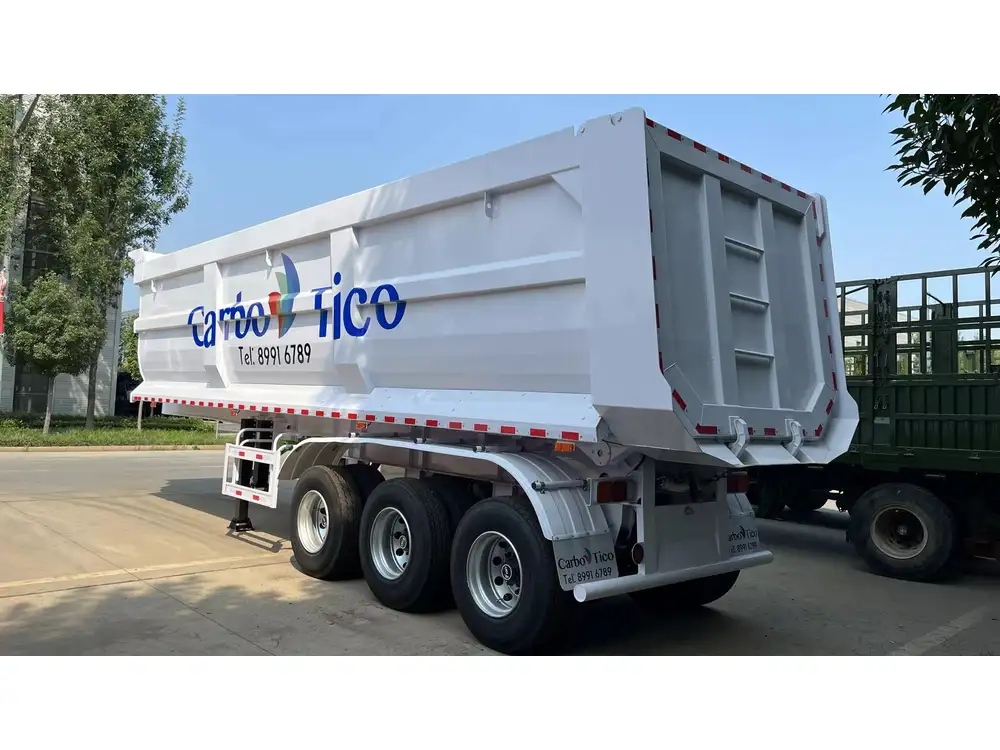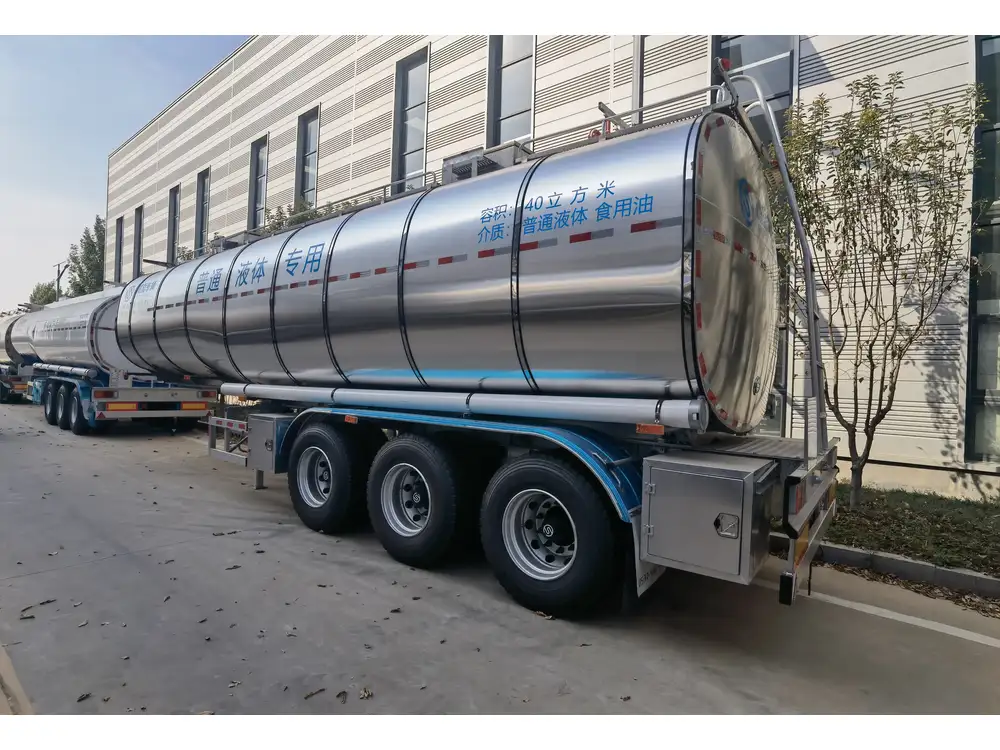The world of transportation and logistics is intricate, multifaceted, and essential for commerce. Within this sphere, semi-trailers, especially flatbed trailers, play a pivotal role. The classification of flatbed trailers as commercial vehicles often raises questions, especially among those navigating the complexities of freight transport laws and industry standards. This article aims to elucidate the nature and classification of flatbed trailers, examining their functions, regulations, and the nuances that determine their status as commercial vehicles.
Understanding Flatbed Trailers
Definition and Design
Flatbed trailers are characterized by their open design, featuring a flat, level platform with no built-in sides or roof. This design allows for the transportation of various cargo types, making them particularly versatile. The flatbed is structured to handle oversized loads, equipment, and unusual shapes that other types of trailers typically cannot accommodate.
Key Design Features:
- Load Capacity: Capable of supporting heavy loads, often exceeding 48,000 lbs.
- Material: Usually constructed from high-strength steel or aluminum for durability and reduced weight.
- Versatility: Suitable for transporting construction materials, machinery, and even vehicles.

Common Uses of Flatbed Trailers
Flatbed trailers serve diverse industries, including construction, manufacturing, and automotive transport. We can break down the common uses into several categories:
Construction:
- Transporting heavy machinery (e.g., excavators, bulldozers).
- Delivery of building materials such as timber and steel beams.
Agriculture:
- Hauling crops like hay bales or farm equipment.
Automotive:
- Moving damaged vehicles or autos that require specialized transport.
Manufacturing:
- Shipping metal sheets, machinery parts, and other large items.
Regulatory Considerations
The classification of a flatbed trailer as a commercial vehicle hinges on several regulatory frameworks. To thoroughly comprehend this aspect, we must delve into various legal definitions and requirements.
Commercial Vehicle Classification

What Defines a Commercial Vehicle?
According to the Federal Motor Carrier Safety Administration (FMCSA), a commercial vehicle is defined as any motor vehicle used for transporting goods or passengers for compensation. This definition encompasses a broad range of vehicles, but specific criteria must be met:
- The vehicle’s gross vehicle weight rating (GVWR) is 10,001 pounds or more.
- The vehicle is designed to transport 16 or more passengers (including the driver) for compensation.
- The vehicle is utilized to transport hazardous materials.
Evaluating Flatbed Trailers
Determining whether a flatbed trailer qualifies as a commercial vehicle involves assessing its design and usage, which we can categorize as follows:
Weight Considerations:
- A flatbed trailer typically has a GVWR exceeding 10,000 pounds, making it a candidate for commercial classification.
Usage Parameters:
- If the trailer is utilized for business purposes, particularly in the transport of goods or as part of a fleet operation, it is classified as a commercial vehicle.
Regulatory Compliance:
- All commercial vehicles must adhere to FMCSA regulations, including proper registration, licensing, and maintenance standards.
Examples and Scenarios
To clarify how flatbed trailers fit within the commercial vehicle category, consider the following scenarios:
| Scenario | Commercial Vehicle Classification |
|---|---|
| A flatbed trailer transporting construction materials for a contractor. | Yes, classified as commercial. |
| A flatbed trailer carrying personal items on a family move. | No, classified as personal. |
| A flatbed utilized for transporting machinery from a manufacturer to a distributor. | Yes, classified as commercial. |
| A flatbed trailer used exclusively for personal use without compensation. | No, classified as personal. |

Key Factors Influencing Classification
State Laws and Regulations
It is imperative to recognize that while federal definitions exist, state laws may impose additional classification criteria for commercial vehicles. For instance, some states have unique regulations pertaining to the weight and use of flatbed trailers that could affect their classification.
Insurance Implications
Insurance requirements differ significantly between personal and commercial vehicles. If a flatbed trailer is determined to be commercial, it will typically necessitate higher liability coverage, reflecting the increased risk associated with transporting goods for hire.

Licensing Requirements
Operators of commercial vehicles, including those utilizing flatbed trailers, must possess the appropriate commercial driver’s license (CDL). The necessity for a CDL depends on the weight and nature of the load carried, emphasizing the importance of adhering to state and federal regulations.
Financial Considerations
Cost of Operation
Operating a flatbed trailer as a commercial vehicle entails various expenses, including:
- Fuel: Commercial vehicles generally have higher fuel consumption rates due to their size and load capacity.
- Insurance: As mentioned, commercial insurance is significantly pricier.
- Maintenance: Regular inspections and maintenance protocols are crucial for safety compliance.
- Licensing Fees: Commercial vehicle licensing can be more costly than standard vehicle registration.

Financing Options
For businesses utilizing flatbed trailers, understanding financial avenues is key. Potential customers can explore:
- Leasing Options: Businesses may opt to lease flatbed trailers, minimizing upfront costs.
- Financing Solutions: Loans can also be obtained from banks or specialized lending institutions focused on commercial vehicles.
The Growing Importance of Flatbed Trailers in Logistics
Industry Trends
The logistics industry has witnessed a surge in demand for flatbed trailers. Various trends are responsible for this increase:
E-commerce Expansion:
- An uptick in e-commerce requires efficient logistics solutions, often involving larger loads that flatbed trailers can handle.
Infrastructure Development:
- Government and private sector investments in infrastructure necessitate the transportation of heavy equipment and materials.
Sustainability Initiatives:
- The push toward sustainable transport solutions is driving innovation in flatbed trailer design and fuel efficiency.

Future Outlook
The future of flatbed trailers within the commercial vehicle segment appears robust, propelled by technological advancements such as:
- GPS and Tracking Technology: Enhances transport efficiency.
- Telematics: Provides real-time data, assisting with route optimization and vehicle maintenance.
- Eco-friendly Designs: Innovations aimed at reducing carbon footprints, supporting sustainability in logistics.
Conclusion: Navigating the Classification Maze
Determining whether a flatbed trailer is a commercial vehicle is a multifaceted question influenced by aspects such as usage, weight, regulatory compliance, and state laws. As the transportation industry evolves, understanding these classifications becomes increasingly vital for operators, manufacturers, and customers alike.
For businesses considering the acquisition of flatbed trailers, staying informed on regulations and operational requirements is crucial. Proper planning, adherence to commercial vehicle classifications, and utilization of the trailer’s capabilities can ensure efficient operations, compliance with laws, and optimization of profit margins.
In the intricate dance of logistics, flatbed trailers remain a steadfast partner, serving as vital conduits for industry, commerce, and the economy.



